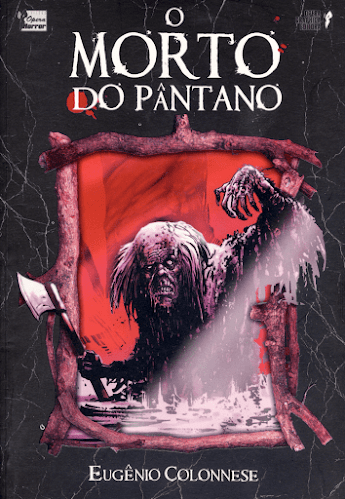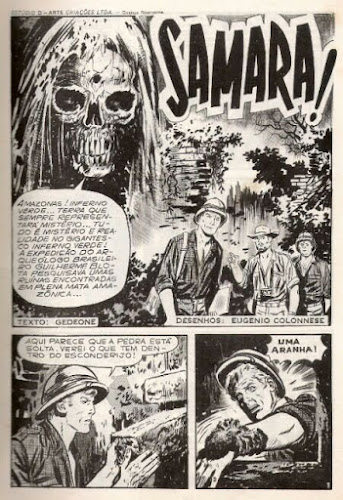“Gutter of Horror” is a Brazilian column from Dinamo Studio website about horror comics. This is a translated version of the articles.
There was a time when horror was the star in comics. After World War II, people were not interest in superheroes anymore and the genre declined heavily in popularity. Horror was the genre that took this void. By the 1950s, horror comics was in its peak. Unfortunately, the witch-hunt against the genre ended a golden age of horror in comics (more on that here and here). Although the shadow of the Comics Code Authority eventually fade away, horror comics never had another great moment like that.
In Brazil, the story of horror comics followed a slightly different path (more on that in future articles). In 1950s, Brazil was recovering from a dictatorship and discovering things like the new technology called television. It was also at that time we had our first superhero (which was created for television and later had his own comic book), Capitão 7 (“Captain Seven”). But democracy unfortunately don’t usually last long in Brazil and in the 1960s we had another dictatorship, one that lasted more than 20 years. It was not a great time for the country – but, ironically, it was a great time for horror. The first years of military dictatorship saw a huge increase im superhero titles. Most of them didn’t last many issues, but almost all of them were gone by 1968 – the year of “AI-5”, the law that allowed the government to chase anyone for anything in the name of “national secutity”. Horror comics ended up filling the void left by superheroes, just like it happen in US a decade earlier. The golden age of horror comics in Brazil lasted about a decade, returning for a brief moment in the 1980s, in the last years of military dictatorship.
But the end of the Golden Age of Brazilian superheroes was the beginning of the Golden Age of Horror comics in Brazil. The genre had arrived in the country in 1940s and 1950s, but didn’t get momentum until the end of the 1960s. At first, the issues featured translations of material from United States and Europe (especially erotic horror comic titles from Italy) but, as the popularity of the genre grew, the companies started to publish more and more material made in Brazil, especially after the end of the titles from United States due to the Comics Code. This allowed many artists and writers from the country to shine and make their marks. One of the most important among these artists was Eugenio Colonnese.
Son of a Brazilian mother and Italian father, Eugenio Colonnese was almost a citizen of the world. He started in comics in Argentina in the 1940s and years later moved to Sao Paulo. He came to Brazil just in time to see horror comics as a popular genre.
Although Brazil inherited the anthology format of story, which was the default in America and Italy, the authors also created characters that appeared regularly in several independent stories. Eugenio Colonnese is responsible for the creation of two of the most known Brazilian horror characters: Mirza, the Woman Vampire and the "Morto do Pântano ("Dead of Swamp", which the Brazilian spelling sounds similar to the Brazilian spelling of “Swam Thing”, but the characters were very different). Although this two characters seems to share similarities with Vampirella and Swamp Thing, both were created in 1967 - before his American counterparts. Colonnese would also be known for drawing several stories featuring vampires, especially Dracula.
Eugenio Colonnese didn’t work just in horror. He also made erotic comics (which, at the time, was not far from the horror genre), War and Superheroes. For the latter he created brazilian superheroes “Mylar", "Superago" and "Escorpião". Colonnese also work on "Tide War", a title from British publisher Fleetway Publication (also the publisher of 2000 AD).
By the end of the 1970s, Colonnese stopped working on comics to illustrate school textbooks and working on books about comics and illustration. He got back in the 1980s, writing and drawing stories for “Calafrio” and “Mestres do Terror”, titles from "D-Arte" (his studio later turned publisher) and, although never return fully to comics, it didn't reject them either, working on a few projects here and there.
Eugenio Colonnese past away 2008 due to multiple organ failure 2 months after suffering a stroke. It was a great brazilian artist whose legacy still endure.
Rafael Algures is a Bachelor of Philosophy specialized in Neurosciences of Language. He is also a copywriter, content and science writer, and a comic book creator. His latest work, “Gutter of Horror: Transition”, a short horror comic about Philosophy and Artificial Intelligence are available at Amazon – digital and paperback.








